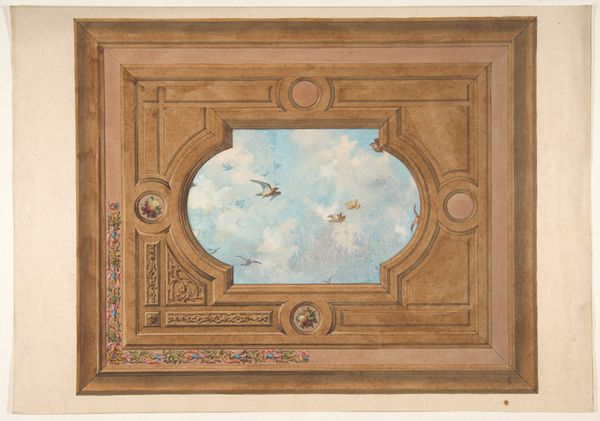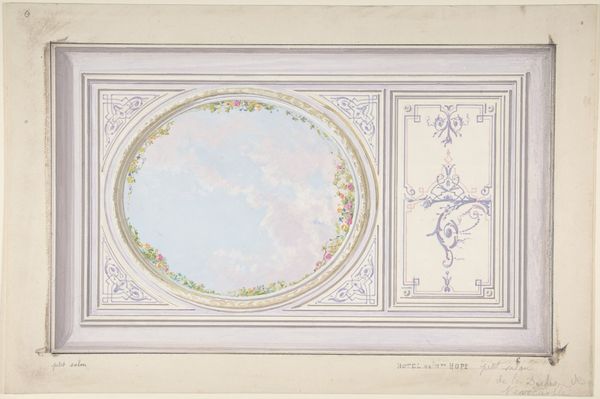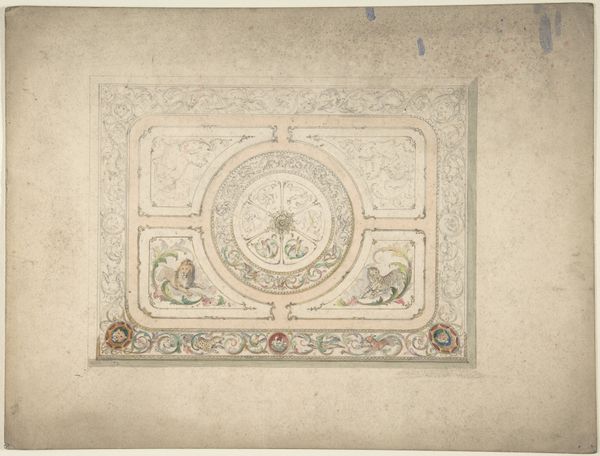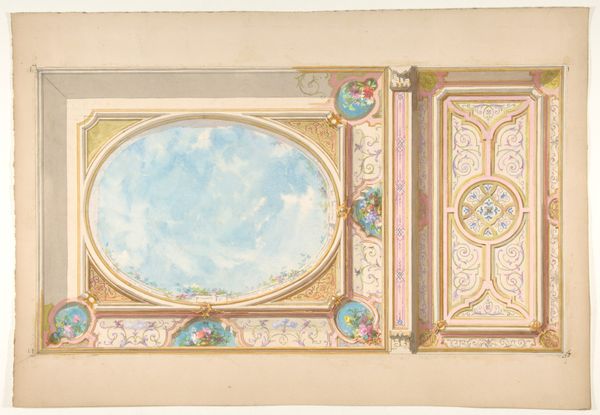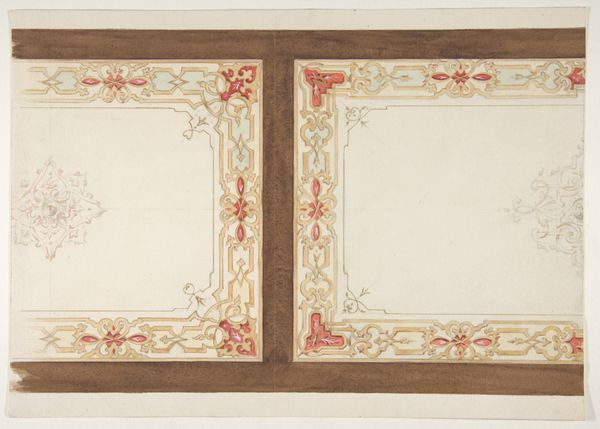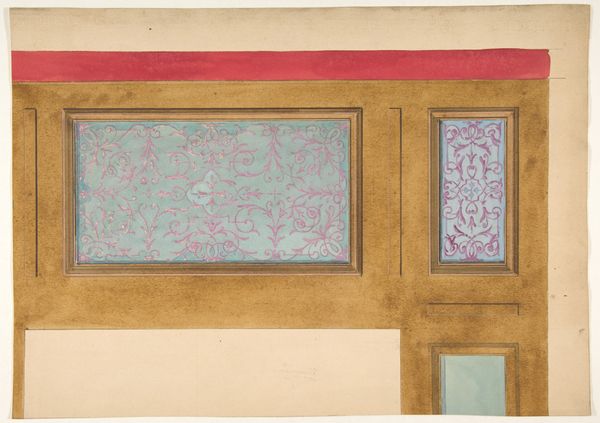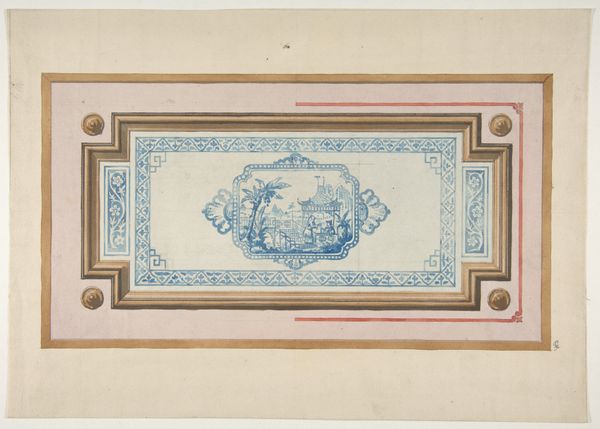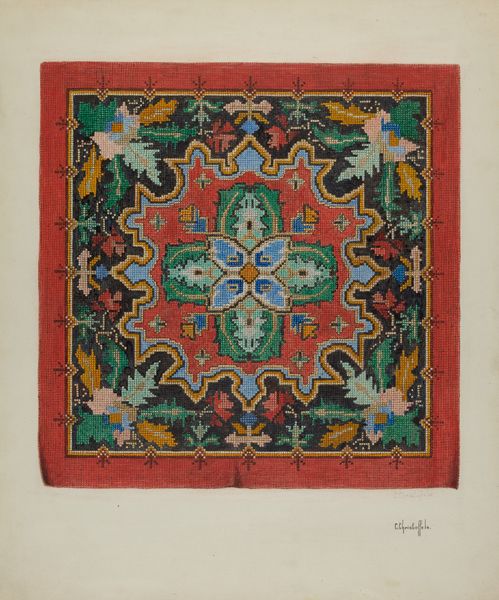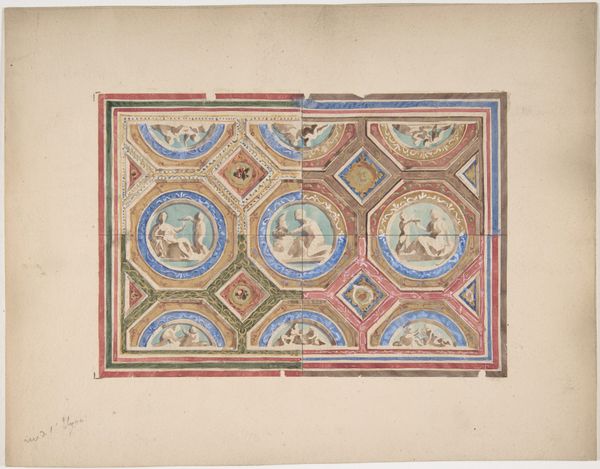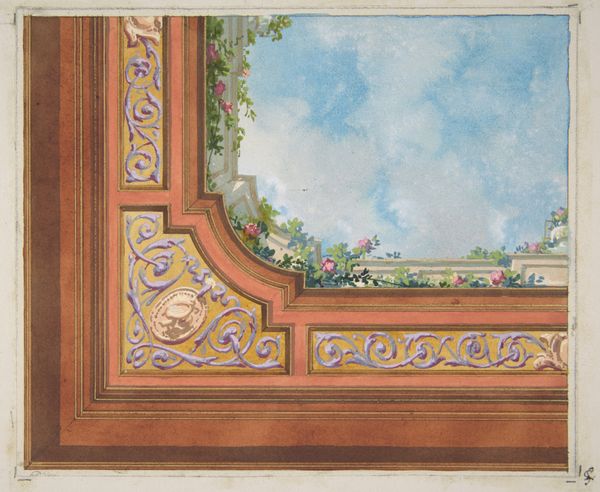
Design for a ceiling painted with trompe l'oeil clouds 1830 - 1897
0:00
0:00
drawing, ornament, print, fresco, watercolor
#
drawing
#
ornament
#
water colours
# print
#
perspective
#
fresco
#
11_renaissance
#
watercolor
#
cloud
#
trompe-l'oeil
#
decorative-art
#
watercolor
Dimensions: sheet: 14 3/4 x 10 3/8 in. (37.5 x 26.3 cm)
Copyright: Public Domain
Editor: This watercolor and pencil drawing is entitled "Design for a ceiling painted with trompe l'oeil clouds" and it was created by Jules-Edmond-Charles Lachaise between 1830 and 1897. I am immediately struck by how this piece toys with architectural space, making you question what is real and what is artifice. How would you interpret this piece in relation to its historical context? Curator: This design offers us a fascinating lens through which to view 19th-century aspirations and anxieties. The trompe l'oeil technique, aiming to trick the eye into perceiving depth where there is none, speaks to the era's obsession with realism and illusion. Consider how such displays of opulence served to reinforce social hierarchies, quite literally placing the elite under an idealized, heavenly sphere. But what does it mean to manufacture the divine in a period marked by social unrest? Does this pursuit of illusion become a tool of escapism, or perhaps even a form of subtle political commentary? Editor: That's a very interesting point. So, do you think that this tension between reality and illusion might also reflect broader social tensions of the time? Curator: Absolutely. As industrialization transformed society, and class divisions deepened, art became a powerful site for negotiating identity and power. The ability to afford such elaborate ornamentation was a status symbol, certainly, but also a means of control. In what ways might we see this aesthetic as both seductive and subtly oppressive? Editor: Thinking about it that way really changes my understanding. It’s no longer just a pretty picture, but a reflection of the era’s power dynamics. Curator: Precisely. And in doing so, we gain insight into not only the art of the period but also the society that produced and consumed it. We are challenged to contemplate art's complex relationship with the construction of social order, and in this instance, it shows how representations of space can be acts of ideological construction. Editor: Thanks, that gives me a lot to consider!
Comments
No comments
Be the first to comment and join the conversation on the ultimate creative platform.

